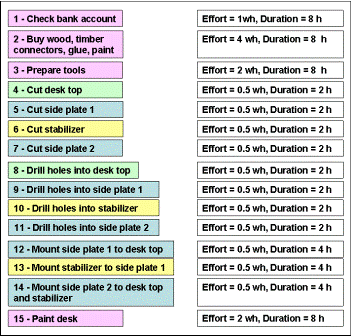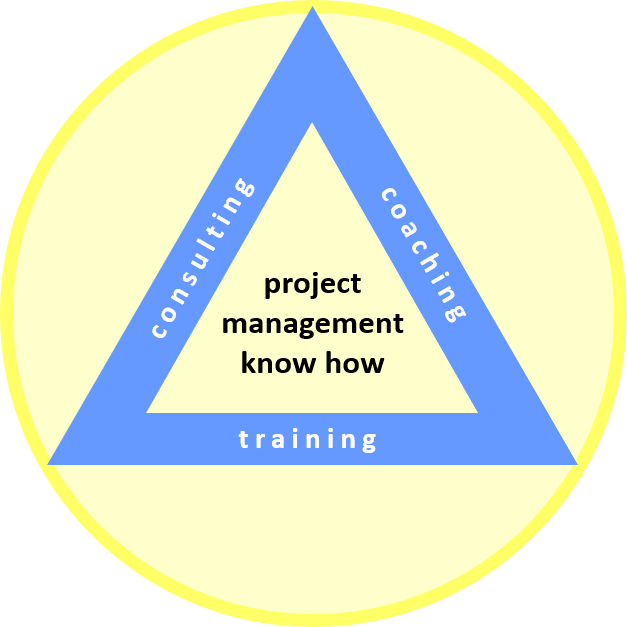PM concepts and tools explained, helping you to understand and apply them
Menu
TEST 3
Lesson 3
Test 3
Question 1: What is the minimum descriptive content of a work package?
- (A) Specification of the goal of the work.
- (B) Prerequisites of the work in terms of tools and material.
- (C) Description of the desired work result and its cost.
- (D) Description of the work in terms of verb and object.
Question 2: What is the lowest level of a WBS?
- (A) Sub-objects
- (B) Work packages
- (C) Project phases
- (D) Work package descriptions
Question 3: Which of the following statements is correct?
In order to work on this task you need the network diagram. Here you can download it: Network Diagram of the "Desk Project"
The following table contains estimated effort and duration of each work package of the desk example: effort in working hours (wh), duration in hours (h).

How do we read this?
Let us take an example: For the work package "Prepare tools" we have
Then, the critical path is ...
- (A) 1 - 2 - 4 - 5 - 6 - 7 - 13 - 14 - 15.
- (B) 1 - 3 - 4 - 5 - 6 - 7 - 13 - 14 - 15.
- (C) 1 - 2 - 4 - 8 - 9 - 12 - 13 - 14 - 15.
- (D) 1 - 2 - 4 - 5 - 6 - 7 - 11 - 14 - 15.
Question 5: What is the duration of the critical path?
- (A) 38 h
- (B) 40 h
- (C) 42 h
- (D) 44 h
Question 6: What is the total effort of that project, in wh?
- (A) 10 wh
- (B) 14.5 wh
- (C) 38 wh
- (D) 40 wh
Question 7: What helps us to prioritize risks?
- (A) Calculating the probability of each risk.
- (B) Multiplying probability with impact of each risk.
- (C) Calculating the impact of each risk.
- (D) Neither one of the above.
Return from Test 3 to Home Page
|
|
|

Your Comments
Have your say about what you just read! Leave me a comment in the box below.